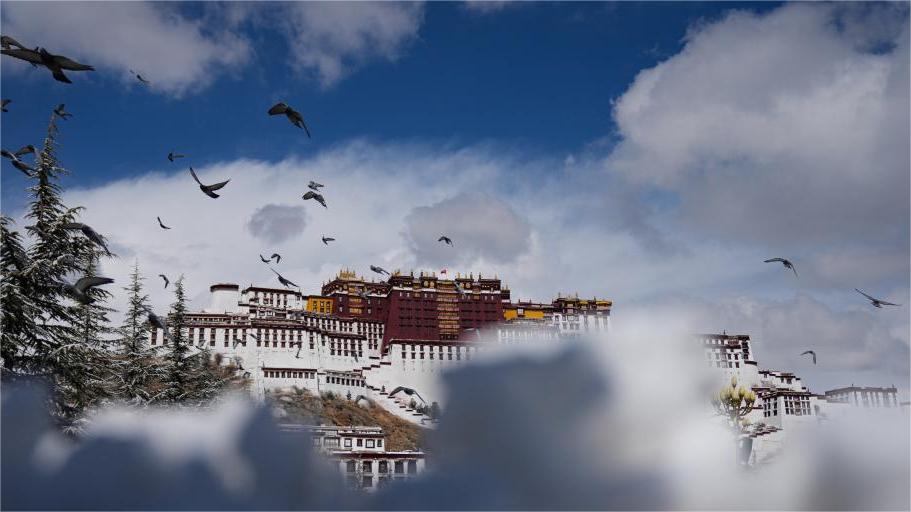Exploring Quanzhou: Walking in the footsteps of Marco Polo
Editor's note: Quanzhou, a coastal city located in southeast China's Fujian Province, is well-known as the starting point of the ancient Maritime Silk Road, which boasts a long history, developed economy, and splendid culture. In 2021, “Quanzhou: Emporium of the World in Song-Yuan China" was added to the UNESCO World Heritage List as a cultural site at the 44th session of the World Heritage Committee of UNESCO, encompassing 22 sites. Let's follow this documentary filmed in 2019 and revisit Quanzhou, a thousand-year-old city along the Maritime Silk Road.
Quanzhou is famous as one of the main ports on the ancient Maritime Silk Road. As such, it's still a diverse mix of culture, tradition and history. Although Quanzhou is less well known than its more touristic neighbor, Xiamen, it has so much to offer for temple lovers, history buffs and those who want to learn a bit more about Chinese culture.
There's no better place to start exploring this history than the beautiful Kaiyuan Temple, which sits in the center of the city and has a history of about 1,300 years, dating back to the Tang dynasty. It can be found nestled in between the East and West Pagodas, which together stand as the iconic symbols of the city.
Kaiyuan Temple is the largest Buddhist temple in Fujian province with an area of 78,000 square meters. Some pillars and statues which stand in Kaiyuan Temple today came from the old Hindu temple that previously existed in the city, showcasing a mix of Buddhism and other religious elements.
The temple occupies an area which used to be a mulberry forest, a tree which happens to be the primary food source of the silkworm. In turn, these little worms produced silk which was then transported out of Quanzhou port around the globe.
Quanzhou was one of the four major Chinese ports in use under the Tang dynasty, going on to become the largest port in Asia during the Song and Yuan dynasties. It was linked with around a hundred other ports along the Maritime Silk Roads, and several famous medieval explorers, including Marco Polo, wrote descriptions of the port as one of the largest harbors in the world.
The Quanzhou Museum of Overseas Communication History offers an insight into the city's trading history. It helps paint a picture of how cultures from around the world came together here, on a much larger scale than in other parts of China at the time, and how this has shaped the city of Quanzhou today. The museum showcases a vast array of the wares that China traded out, but also details the amount of business that was flooding into Quanzhou at the same time, as well as different cultures and religions that arrived with the businessmen settling in Quanzhou to trade.
It's fair to say that the Silk Road never really died in Quanzhou, and the same products that were being moved around the ancient maritime routes all those years ago are still being exported all over the world today.
One of those commodities is, of course, tea, and Quanzhou is home to one of China's most famous and expensive varieties - Tieguanyin.
One of the reasons that Tieguanyin interests me so much is because of its name. It's rumored to be the first ever tea to make its way back west, with the "tie" in Tieguanyin sounding more like "tea" in the local accent, potentially giving the name to our western cup of cha.
This is only a fable, but Wei Yuede of Wei Yin Tea is sure of the fact that his ancestors founded Tieguanyin. He is the 9th generation in his family to work in the tea industry, and says that Tieguanyin has helped his region become more prosperous, with about 80 percent of the people in Anxi involved in the tea industry in some way.
"Tieguanyin tea helped Anxi County develop from one of a 100 poorest counties into one of a 100 most affluent counties," Wei explains, noting that the changes came after the country's reform and opening up.
Therefore, he notes that "Anxi's development cannot be separated from Tieguanyin tea."
Another industry which is going from strength to strength in the Quanzhou region is Dehua porcelain. It has been traded out of the area for centuries, finding favor abroad, especially in France, where it was quite aptly called Blanc de Chine, or "white from China".
Su Xianzhong is a 4th generation Dehua porcelain artist, who continues to bring this famous white porcelain to the world after all these years, in a slightly different way. "Today, to further develop our porcelain industry, we need a universal language of art, including these new works of mine," he explains, introducing us to some of his new concepts which have received recognition for their originality as a bridge between the traditional industry and modern design.
Rather than being involved in mass production as in the era of the ancient Silk Road, Su's artwork has featured in several galleries at home and abroad, while some of his new ideas and concepts, for example, making porcelain look like other everyday commodities including paper, are changing the notion of what Dehua porcelain should look like.
However, most of the porcelain made in the area is still exported, so mass production is still necessary, and the area is home to many factories that mass produce porcelain for companies both home and abroad.
Zheng Pengfei's factory, which is part of Shunmei Group, uses traditional techniques to produce porcelain, which is exported to huge companies including Tesco, Disney store and Target.
"Now we sell to more than 100 countries, and we have customers coming to our showroom every day," says Zheng.
The city of Quanzhou has continued to flourish, and since the founding of the People's Republic of China in 1949, several new industries have sprung up in the area. Although silk isn't traded as heavily in the region today, the shoes and clothing industry is thriving, no more so than at Shishi clothing market.
First opened in 2005, there are now more than 3,200 businesses stationed in Shishi clothing market, with an annual turnover of about 30 billion yuan. The local government instigated several policies to make trading here easier, including customs clearance and favorable tax policies, meaning many businesses from overseas, predominantly the Middle East, come here to buy and sell fabric and clothing.
It's clear that the industries put Quanzhou on the map in ancient times have helped the area continue to thrive. From the beautiful coastline to its unique blend of cultures, Quanzhou is definitely worth a visit, whether you're a trader or not.
Photos
Related Stories
- Modern makeover revives ancient commercial street
- 7th China Quanzhou Int'l Puppet Festival held in SE China's Fujian
- Exhibition on China's world heritage city of Quanzhou launched in Sydney
- SE China's Quanzhou drives high-quality development through sci-tech innovation
- Quanzhou: home of miraculous Chinese puppet show
- Starting point of ancient Maritime Silk Road in SE China regains energy
Copyright © 2024 People's Daily Online. All Rights Reserved.









